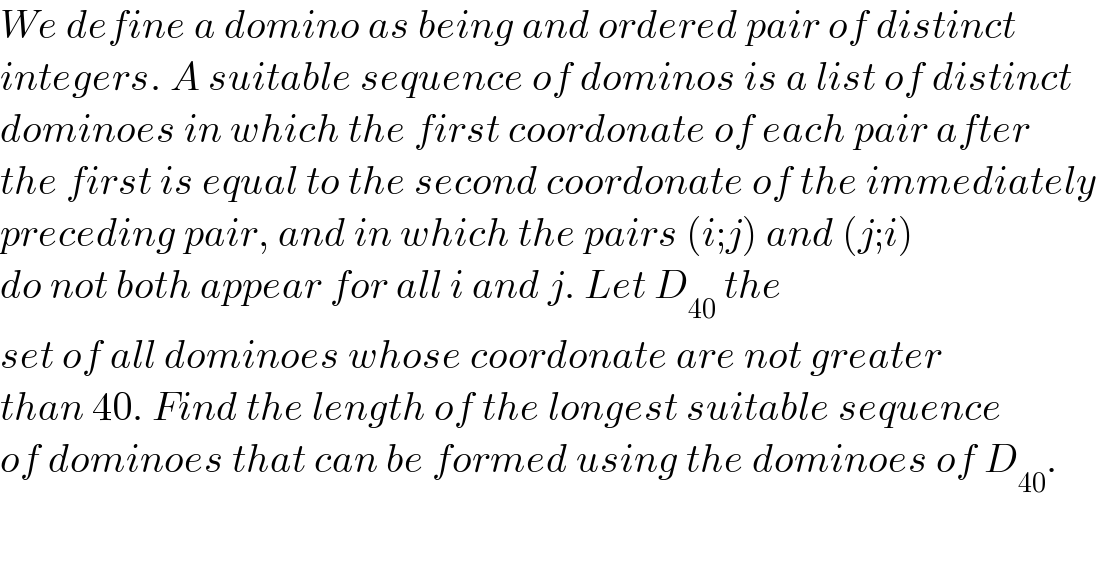Question Number 205654 by Lindemann last updated on 26/Mar/24

$${We}\:{define}\:{a}\:{domino}\:{as}\:{being}\:{and}\:{ordered}\:{pair}\:{of}\:{distinct} \\ $$$${integers}.\:{A}\:{suitable}\:{sequence}\:{of}\:{dominos}\:{is}\:{a}\:{list}\:{of}\:{distinct} \\ $$$${dominoes}\:{in}\:{which}\:{the}\:{first}\:{coordonate}\:{of}\:{each}\:{pair}\:{after} \\ $$$${the}\:{first}\:{is}\:{equal}\:{to}\:{the}\:{second}\:{coordonate}\:{of}\:{the}\:{immediately} \\ $$$${preceding}\:{pair},\:{and}\:{in}\:{which}\:{the}\:{pairs}\:\left({i};{j}\right)\:{and}\:\left({j};{i}\right) \\ $$$${do}\:{not}\:{both}\:{appear}\:{for}\:{all}\:{i}\:{and}\:{j}.\:{Let}\:{D}_{\mathrm{40}} \:{the} \\ $$$${set}\:{of}\:{all}\:{dominoes}\:{whose}\:{coordonate}\:{are}\:{not}\:{greater} \\ $$$${than}\:\mathrm{40}.\:{Find}\:{the}\:{length}\:{of}\:{the}\:{longest}\:{suitable}\:{sequence} \\ $$$${of}\:{dominoes}\:{that}\:{can}\:{be}\:{formed}\:{using}\:{the}\:{dominoes}\:{of}\:{D}_{\mathrm{40}} . \\ $$
